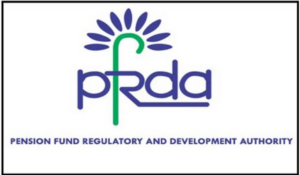The IBPS Clerk Prelims Exam 2025 has now concluded, marking the end of its final phases on 5 October. With the help of this detailed IBPS Clerk Exam Analysis 2025, candidates can carefully evaluate their performance, understand the overall exam trends, and use these insights to strengthen their preparation strategy for the upcoming main examination.
IBPS Clerk Prelims Exam Analysis 2025, 5 October, Shift 3
In the third shift of the IBPS Clerk Prelims 2025, candidates faced a mix of straightforward and time-consuming questions. While some parts were quick to attempt, others required careful calculation and focus. The overall difficulty level remained easy to moderate, making speed and accuracy the key to scoring well. The shared feedback provides valuable insights into good attempts, section-wise analysis, and difficulty levels, helping aspirants refine their strategy for upcoming exams.
IBPS Clerk Prelims Exam Analysis 2025, 3rd Shift, 5 October: Difficulty Level
The third shift of the IBPS Clerk Exam 2025 on 5 October was of Easy to moderate level, with a balanced mix of easy and tricky questions. To give a clearer picture of the exam trend, the section-wise difficulty level has been given below.
| IBPS Clerk Exam Analysis 2025, 5 October, Shift 3: Difficulty Level | |
| Sections | Difficulty Level |
| Reasoning Ability | Easy to Moderate |
| Numerical Ability | Easy to Moderate |
| English Language | Easy to Moderate |
| Overall | Easy to Moderate |
IBPS Clerk Exam Analysis 2025, 3rd Shift, 5 October: Good Attempts
The IBPS Clerk Exam Analysis 2025 for the 3rd shift on 5 October highlights the good attempt range for each section. Candidates who managed accuracy with speed are expected to score well, with overall good attempts falling between 72 and 80.
| IBPS Clerk Exam Analysis 2025, 3rd Shift, 5 October: Good Attempt | |
| Sections | Good Attempts |
| Reasoning Ability | 26-31 |
| Numerical Ability | 23-27 |
| English Language | 20-25 |
| Overall | 72-80 |
IBPS Clerk Prelims Exam Analysis 2025, Shift 3, 5 Oct: Section-wise Analysis
Feedback from candidates and experts has highlighted the overall difficulty and types of questions in this shift. We will review the main topics covered and analyze the questions asked in each section.
Reasoning Ability
The Reasoning Ability section was mostly easy to moderate. Most questions were simple, but some needed careful thinking and good logical skills. Managing time well was important to attempt this section.
| IBPS Clerk Prelims Exam Analysis 2025, 3rd Shift, 5 October: Reasoning Ability | |
| Topics | No. of Questions |
| Linear Seating Arrangements (8 Persons, North Facing) | 5 |
| Square Seating Arrangements (Facing In and Out) | 5 |
| Uncertain Linear Seating Arrangements (Facing North) | 4 |
| Month & Dates Based Puzzle | 5 |
| Word Based Series | 4 |
| Order & Ranking (6 Person) | 3 |
| Number Based Series | 1 |
| Direction and distance | 3 |
| Syllogism | 3 |
| Pair formation | 1 |
| Odd One Out | 1 |
| Total | 35 |
Numerical Ability
The Numerical Ability section was of easy to moderate level. While many questions were straightforward, some needed accurate calculations and careful thinking. Efficient time management was key to completing this section.
| IBPS Clerk Prelims Exam Analysis 2025, 3rd Shift, 5 October: Numerical Ability | |
| Topics | No. of Questions |
| Simplification | 11 |
| Arithmetic (SI-CI, Boat & Stream, Average, Partnership etc) | 12 |
| Wrong Number Series | 2 |
| Table Data Interpretation | 5 |
| Bar Graph Data Interpretation | 5 |
| Total | 35 |
English Language
The English Language section was mostly easy to moderate. This section tested comprehension and spotting errors quickly.
| IBPS Clerk Prelims Exam Analysis 2025, 3rd Shift, 5 October: English Language | |
| Topics | No. of Questions |
| Reading Comprehension (Forest Fire) | 10 |
| Error Detection | 3 |
| Single Fillers | 5 |
| Word Swap | 3 |
| Para Jumble | 5 |
| Sentence Improvement | 4 |
| Total | 30 |
IBPS Clerk Exam Analysis 2025: Comparison with Other Shifts
On comparing the 3rd shift with the other shifts of the IBPS Clerk Prelims Exam 2025 held on 5 October, it is clear that almost all the shifts were similar in nature. No new topics or unexpected question types were introduced, and the overall level of difficulty stayed consistent at easy to moderate. This uniformity indicates that candidates across all shifts had a fair and balanced paper, with reasoning, numerical ability, and English following the same trend throughout the exam.




 PFRDA Grade A Phase 2 Exam Analysis 2025...
PFRDA Grade A Phase 2 Exam Analysis 2025...
 LIC AAO Prelims Exam Analysis 2025, Shif...
LIC AAO Prelims Exam Analysis 2025, Shif...
 IBPS Clerk Prelims Exam Analysis 2025, S...
IBPS Clerk Prelims Exam Analysis 2025, S...

